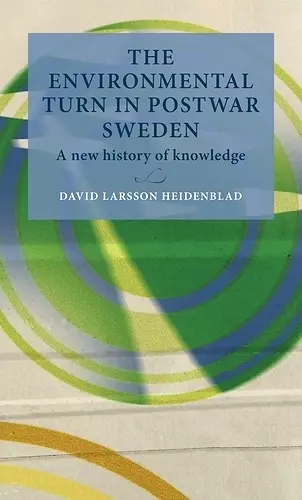The Environmental Turn in Postwar Sweden
A New History of Knowledge
David Larsson Heidenblad author
Format:Hardback
Publisher:Lund University Press,Sweden
Published:7th Sep '21
Should be back in stock very soon

The Stockholm Conference of 1972 drew the world’s attention to the global environmental crisis, but for people in Sweden the threat was nothing new. Anyone who read the papers or watched the television news was already familiar with the issues. Five years early, in the summer of 1967, the situation was very different. So what happened in between? This book explores the ‘environmental turn’ that took place in Sweden in the late-1960s. This radical change, the realisation that human beings were in the process of destroying their own environment, had major and far-reaching consequences. What was it that opened people’s eyes to the crisis? When did it happen? Who set the ball rolling? These are some of the questions the book addresses, shedding new light on the history of environmentalism.
An electronic edition of this book is freely available under a Creative Commons (CC BY-NC-ND) licence.
'David Larsson Heidenblad uses a fine-tuned academic method to create a vivid story that stands firmly on his scientific platform ... a masterpiece and a brilliant narrative for a broad general audience.'
Bo Landin, science writer and documentary filmmaker
‘The environmental turn in postwar Sweden presents a novel understanding of the greening of the welfare state in a country which is often seen as a model. Previous research on the breakthrough years often focused on single issues: acid rain, industrial pollution or toxic substances in birds and fish. In this book, young historian David Larsson Heidenblad convincingly shows how the change was much more sweeping, profound and engaged society and citizens at all levels. Above all, he follows the circulation of environmental knowledge – not just the knowledge of scientific elites but its practical application among popular movements, media, public agencies and, not least, in politics. The book is a key contribution to the emerging understanding of the ongoing and expanding environmental revolution that under ever new names – sustainability, Anthropocene, resilience, climate change – transforms the human-earth relationship and sets new social and policy agendas for the twenty first century.’
Sverker Sörlin, Professor of Environmental History, KTH Royal Institute of Technology, Stockholm
ISBN: 9789198557732
Dimensions: 216mm x 138mm x 16mm
Weight: 445g
256 pages